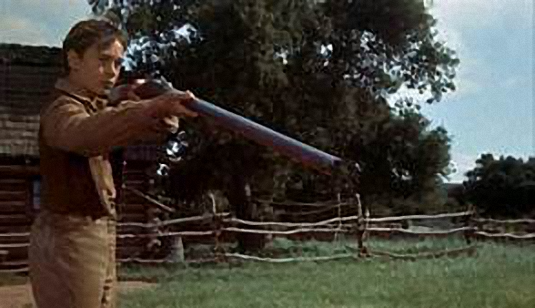Novel versus Film
AJ Robinson

As a writer, I’ve written books and film scripts. I learned there’s an important difference between a novel and a film. The essence of my lesson is in the head and the heart.
• Video makes the film
When you write a book, no matter how emotional the story might become, it’s a much more logical telling than is any movie or television show. It comes down to a simple factor: visuals.
The best example of this is the book and movie Old Yeller. As most kids of my era, the 1960s and the 1970s, learned about the story of Old Yeller in the usual way, I saw it on television. When I saw the film, I cried my eyes out at the ending.
Then, a couple years later, I came across the book in the library of my middle school. I was curious as to how it differed from the movie. When it came to “the scene,” I was shocked.
In the book, after Yeller saves Travis’ mom and Katie from the wolf, they realize that the wolf was rabid. They debate what to do about Yeller. Travis is quite adamant in his efforts to save Yeller, but his mom’s arguments finally sway him. He agrees they must do what is merciful. He calls Yeller into the cabin, puts the muzzle of his shotgun against Yeller’s head and pulls the trigger.
It was a startling scene to imagine, in stark contrast to the movie. For the film, they decide to put Yeller in a pen and watch him. They hope he doesn’t turn rabid.
Why make such a change? Emotions, plain and simple; the audience, sitting in a movie theater, especially children, have a hard time accepting the idea that shooting an apparently healthy dog makes sense. Even if they know it’s the right thing to do, emotionally they can’t accept it.
• Yeller goes mad.
The filmmakers wisely added a scene where we see Yeller go mad. At that point, the audience can accept the etherisation. Yet, it must go the right way.
First, Travis can’t get the gun; his mom has to do it. She’s the mature one; Travis loves Yeller too much to do it. Once she gets the gun, Travis must do the actual shooting.
Yeller is his dog, he loves Yeller and it’s a rite of passage for Travis. He moves from childhood into the first stages of adulthood. He steps up to the plate, as the saying goes, and does something a man must do.
Then there’s the actual shooting. Again, we know Travis must do it, but he can’t enjoy it. His want to do it and his emotional pain must that of the audience. Thus, Travis points the gun at Yeller, steadies himself, closes his eyes and turns away.
Now, think about that for a moment. Should he really do that? Our brain tells us, no, he should take careful aim so he won’t miss and maim the poor animal. He can’t do that because of the heart. Emotionally, he and the audience can’t accept Travis looking down the gun sights of his shotgun at his faithful dog.
• Readers and film audiences accept different realities
This is what you need to keep in mind when writing a film script as opposed to a book. It’s all in the visuals. How will visuals affect the audience.
Combining the gimlet-eye of Philip Roth with the precisive mind of Lionel Trilling, AJ Robinson writes about what goes bump in the mind, of 21st century adults. Raised in Boston, with summers on Martha's Vineyard, AJ now lives in Florida. Working, again, as an engineeer, after years out of the field due to 2009 recession and slow recovery, Robinson finds time to write. His liberal, note the small "l," sensibilities often lead to bouts of righteous indignation, well focused and true. His teen vampire adventure novel, "Vampire Vendetta," will publish in 2020. Robinson continues to write books, screenplays and teleplays and keeps hoping for that big break.
- Government Problem?
- Lemmings at the Gate
- The Empty Picture
- The Big Boss
- Tea Party Inaction
- To Face a Fear
- My Mother Sang
Click above to tell a friend about this article.
Recommended
- David Simmonds
- Clueless Conduct
- If I Were an Inventor
- Reason to Rhyme

- Sjef Frenken
- Moribund Ouch
- Where There's a Will
- Alimentary

- Jennifer Flaten
- Up-sell to a Flu Shot
- Sanitized
- All that Glitters

- M Alan Roberts
- Plant a Seed
- Paint My Face Red
- Parental Epiphany

Recommended
- Matt Seinberg
- To Vax or Not
- Hurricane Sandy 1
- Jumping for the Sun

- Streeter Click
- CFRA 1968
- WBZ AM 22 May 74
- Hollywood Dreams

Recommended
- AJ Robinson
- Master of the World
- Blown Away by Bob
- Altamonte Springs

- M Adam Roberts
- Day of the Dolphines
- Working for the Man
- American Idles

- Ricardo Teixeira
- The Future
- The Unicorn
- There is a Light





